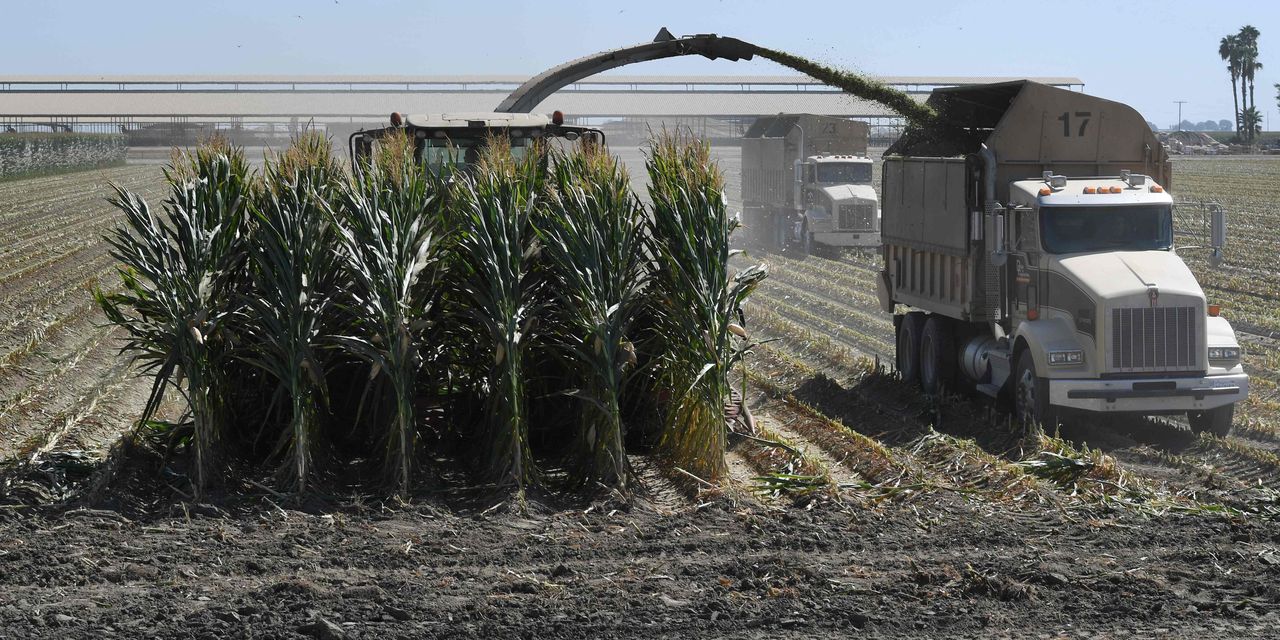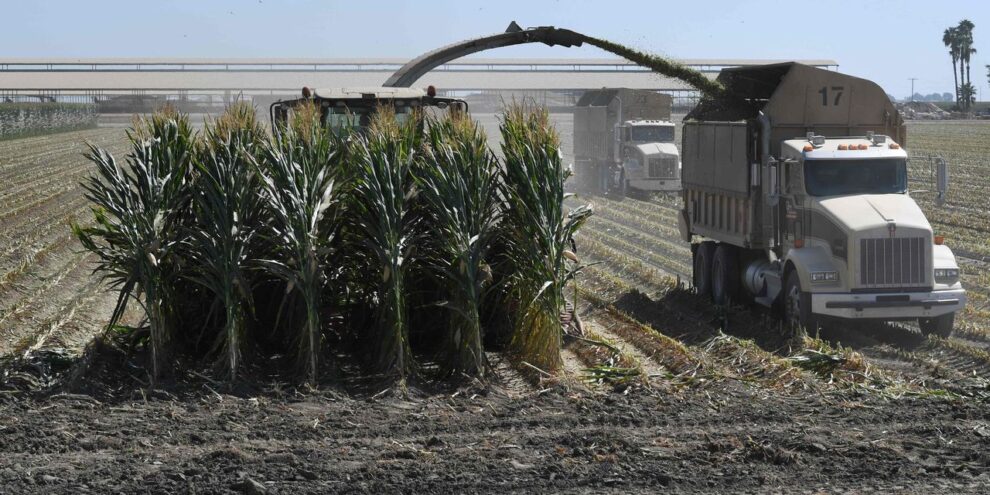
Gasoline prices have been falling for weeks, but diesel and natural-gas prices remain much higher than a year ago — raising costs for the nation’s fuel-intensive agricultural industry and leading to expectations that food prices will remain high.
Kent Vander Lugt, a farmer in southwest Minnesota, says his fuel costs are 60% higher than a year ago, increasing his cost per acre of corn raised by $30 to $40.
A major reason food is so “plentiful and secure” is abundant hydrocarbon, a compound made of hydrogen and carbon found in crude oil and natural gas, which allows for “synthetic fertilizers and cheaper horsepower.” This is driving massive increases in productivity, says Albert Chu, portfolio manager at Newton Investment Management, an affiliate of BNY Mellon.
Fuel prices have begun to decline across the board after a rapid ascent in the wake of the Russia-Ukraine war, says Curt Covington, senior director of partner relations at AgAmerica.
But while the average price per gallon of regular gasoline has dropped by nearly 22% in the past two months, to $3.917 on Aug. 16, diesel prices have seen a slower decline, down 13% since June 16 to $5.034, according to GasBuddy data. U.S. diesel prices peaked at $5.828 on June 21. Based on U.S. government data, diesel prices are still 46% higher than this time last year, says Covington.
Diesel engines power roughly 75% of U.S. farm equipment, transport 90% of farm products, and pump about 20% of agriculture’s irrigation water, according to Diesel Technology Forum.
Diesel supplies have been tight, partly due to a lack of Russian oil, says Patrick De Haan, head of petroleum analysis at GasBuddy, adding that Russian oil is heavier and yields more heavy products like diesel. “There’s a possibility that diesel might break new record highs, particularly in the fourth quarter,” says Tom Kloza, global head of energy analysis at the Oil Price Information Service, a unit of Dow Jones & Co., publisher of Barron’s and MarketWatch. “Commercial and industrial customers around the world are jumping through hoops to come up with methods of substituting oil, diesel, and marine gasoil for natural gas.”
Natural-gas prices NGU22, +0.85% NG00, +0.85%, meanwhile, trade 150% higher year to date, settling at $9.329 per million British thermal units on Aug. 16 — the highest since 2008. Natural gas is used in the production of fertilizer and as an energy source to dry grain to prevent spoilage.
Read: Why natural-gas prices are holding near 14-year highs
The past year’s natural-gas price rise is having “an inordinate impact on the cost of food production,” says Sal Gilbertie, president and chief investment officer at Teucrium Trading. The biggest cost input is generally fertilizer, he says. “This is where farmers are feeling the pinch.”
“Consumers should expect food costs to remain elevated for quite some time, at least until energy prices subside substantially,” he says.
“ “Consumers should expect food costs to remain elevated for quite some time, at least until energy prices subside substantially.” ”
In July, the United Nations’ Food Price Index, a measure of monthly change in international prices for a basket of food commodities, was 13.1% above the year-ago level. Year to date, corn futures CZ22, +1.22% C00, +1.22% have climbed 2.9%, soybeans SX22, -0.48% S00, -0.48% are up 3.1%, and wheat WZ22, +2.67% W00, +2.67% is up 4.2%.
Chu expects a “structural change in rising food prices and supply insecurity.” The world population is expected to rise to 10 billion from 8 billion in the coming decades, “setting the stage for continued increase in demand,” he says. Meanwhile, the environment to grow food is increasingly difficult given climate change, water volatility, higher hydrocarbon costs, and rising geopolitical instability, he says.
It’s important to understand “how inelastic food demand is over the long term and how numerous factors are driving a widening of supply and demand balances,” says Chu.











Add Comment